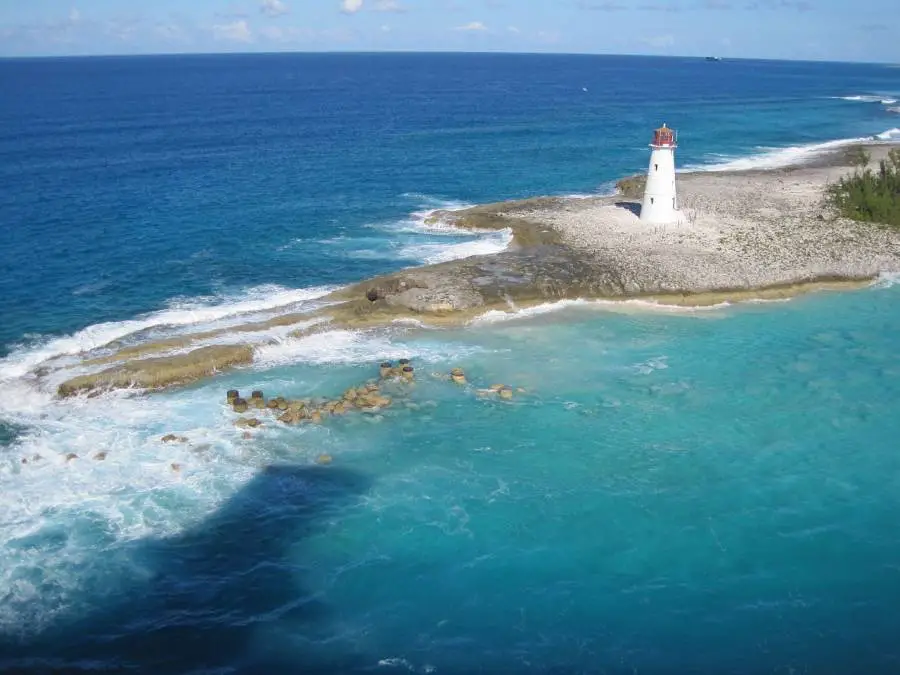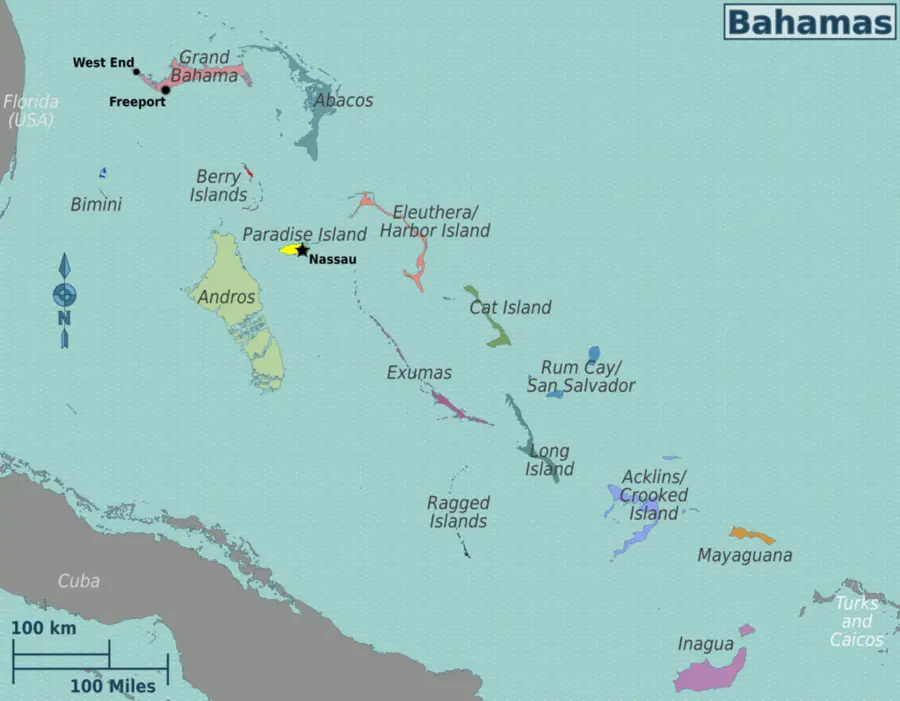Table of Contents
Looking for a Bahamas fact sheet to help with school projects or class presentations? This student-friendly guide offers essential information about the Bahamas, including geography, history, economy, and fun facts. As one of the most beautiful English-speaking countries in the world, the Bahamas has a fascinating story to tell.
30 Key Facts: The Bahamas Fact Sheet for Students

- Official Name: Commonwealth of The Bahamas
- Location: Atlantic Ocean, southeast of Florida
- Region: North America (Lucayan Archipelago)
- Capital City: Nassau (located on New Providence Island)
- Number of Islands: Over 700 islands, cays, and islets
- Official Language: English
- Population: Approximately 377,000 people (as of 2013)
- Currency: Bahamian Dollar (BSD)
- Time Zone: Eastern Standard Time (EST)
- Government Type: Parliamentary democracy and constitutional monarchy
- Head of State: The British monarch (represented by a Governor-General)
- Independence: Achieved in 1973 (from the United Kingdom)
- Economy: Largely based on tourism and financial services
- GDP per Capita: Among the highest in the Americas (after the US and Canada)
- Major Industries: Tourism, offshore banking, agriculture, and fishing
- Climate: Tropical savannah; warm, sunny, and humid
- Colonial History: Became a British Crown colony in 1718
- First Inhabitants: The Lucayan people, part of the Arawakan-speaking Tainos
- Famous Historical Fact: Site of Christopher Columbus’s first landfall in the New World (1492)
- Flag of the Bahamas: Features aquamarine (for sea), gold (for the sun), and black (for the strength of the people)
- Mount Alvernia: The highest point in the Bahamas is Mount Alvernia on Cat Island, standing at only 63 meters (207 feet) above sea level.
- Bimini: The closest Bahamian island to the United States, Bimini is known as the “Gateway to the Bahamas.”
- No Rivers: The Bahamas has no rivers; instead, it features underground freshwater caves and blue holes.
- UNESCO Site: The Bahamas is home to the Lucayan National Park, which includes one of the longest underwater cave systems in the world.
- Hurricane Zone: The Bahamas is located in the Atlantic hurricane belt and is vulnerable to tropical storms and hurricanes, especially between June and November.
- Marine Biodiversity: The waters around the Bahamas support coral reefs, sea turtles, dolphins, and a wide variety of tropical fish, making it a top scuba diving destination.
- Bahamas National Sport: The national sport is sloop sailing, and regattas are major cultural events.
- Junkanoo Festival: A vibrant street parade with music, dance, and colorful costumes, Junkanoo is held on Boxing Day (December 26) and New Year’s Day.
- No Income Tax: Residents of the Bahamas do not pay income tax, capital gains tax, or inheritance tax.
- Education: Education is free and compulsory for children between the ages of 5 and 16.
More Facts about the Bahamas
Here are more facts about the geography, economy, history, and the flag of the Bahamas:
Geography of the Bahamas

The Bahamas is made up of low-lying, flat limestone islands surrounded by shallow waters, coral reefs, and beautiful beaches. Its name may come from the Spanish phrase “baja mar,” meaning “shallow sea.” This reflects the country’s geographical makeup perfectly.
It lies at the gateway to the Caribbean Sea and the Gulf of Mexico, making it an important historical and trade location. It is also one of only two countries whose official name includes “The” (alongside The Gambia).
Read more about the Bahamas’ Geography and Climate!
A Brief History of the Bahamas
- Pre-Columbian Era: Originally inhabited by the Lucayan people, a subgroup of the Tainos.
- 1492: Christopher Columbus made his first New World landing in the Bahamas.
- 1718: The Bahamas became a British Crown colony to combat piracy.
- Post-American Revolution: Loyalists moved to the Bahamas, bringing enslaved people and setting up plantations.
- 1973: Gained independence but remained part of the Commonwealth with Queen Elizabeth II as monarch.
Economy and Currency
The Bahamas has one of the strongest economies in the Caribbean. The two main pillars are:
- Tourism: Contributing around 60% of GDP
- Financial Services: The Bahamas is a global center for offshore banking
The national currency is the Bahamian dollar (BSD), which is pegged to the US dollar at a 1:1 ratio.
Read more about the Bahamas’ economy!
Flag of the Bahamas

The Bahamas flag is symbolic:
- Aquamarine: Represents the surrounding sea
- Gold: Symbolizes the sun
- Black triangle: Stands for the strength and will of the people
Read more about the Bahamas on Wikipedia.
FAQs About the Bahamas
What are 5 facts about the Bahamas?
1. The Bahamas is made up of over 700 islands, cays, and islets in the Atlantic Ocean.
2. The capital city is Nassau, located on New Providence Island.
3. English is the official language, making it an English-speaking country in the Caribbean region.
4. It gained independence from the United Kingdom in 1973 but remains a member of the Commonwealth.
5. Tourism and finance are the main sources of income, making the Bahamas one of the wealthiest countries in the Caribbean.
What are the Bahamas famous for?
The Bahamas is famous for its crystal-clear turquoise waters, white-sand beaches, and vibrant coral reefs. It’s a top destination for snorkeling, scuba diving, and cruising. The country is also known for its Junkanoo festival, swimming pigs of Exuma, and friendly locals. Additionally, it’s one of the most popular tropical vacation spots in the Western Hemisphere.
Is the Bahamas a rich country?
Yes, the Bahamas is considered a wealthy country in the Caribbean. In terms of GDP per capita, it ranks among the highest in the Americas—just behind the United States and Canada. Its economy relies heavily on tourism, which accounts for over 60% of its GDP, and offshore financial services.
What is the Bahamas’ overview?
The Bahamas is an archipelagic nation in the Atlantic Ocean, located southeast of Florida and northeast of Cuba. It consists of more than 700 islands and cays, although only about 30 are inhabited. The Bahamas features tropical weather, clear waters, and flat terrain. The capital is Nassau, and the official language is English. It is known for its rich cultural heritage, British colonial history, and a thriving tourism-based economy.


